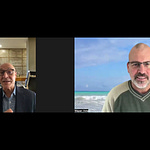If you’re on Administrative Leave or recently left Federal service and reassessing your career path, you are experiencing layoff trauma—and the pain is real!
Thousands of international development professionals—especially those connected to USAID—are reassessing their career paths. The market is uncertain, the job boards are flooded, and the future feels less than secure.
Yet, there is hope! Jim Thompson, a former USAID and State Department veteran with 30 years of service, successfully transitioned from Federal service to the private sector.
His advice? Start early, think big, and tailor your pitch. The hardest part is starting. The best time to begin? Today.
Here’s what you can learn from Jim’s journey.
Set a Goal for Your Exit Strategy
Jim’s transition began two years before he left federal service. He wasn’t running from a bad job—he was running toward the chance to earn more money, have more fun, and endure less bureaucracy.
“I knew I wanted to retire at my earliest opportunity, and I wanted to have something ready to guide me to my next career.”
He didn’t build a flashy personal website or write a memoir. He used a three-step process to publish articles on LinkedIn:
Wrote and shared short reflections on topics that mattered to him
Tagged people and encouraged discussion
Used the resulting engagement to test ideas, refine his pitch, and build visibility
This is a key lesson: start showing your professional interests publicly before you need your next job. That can feel hard now that everyone does need a new job, but start today.
Explore Broadly, Apply Strategically
Jim didn’t lock himself into one industry at the beginning. His informational interviews spanned multiple types of industries to find where he would be happiest working. He tried:
Federal contractors doing USAID-style work
Private sector firms (e.g., Deloitte, P&G)
Nonprofits, think tanks, and foundations
Service and lifestyle companies beyond the development sector
He used each interview—whether it led to an offer or not—as a learning experience to practice fielding the tough questions, as an opportunity to tell his story, and refine how he explained his government experience in business terms.
His biggest takeaway?
“No one else has your exact experience. No one else is you. Bring your genuine self to the interview.”
Translate Your Resume for the Private Sector
Too many former USAID professionals show up with multi-page, jargon-heavy CVs. Jim’s advice? That doesn’t work anymore.
You need to have a private sector resume if you want a job in the private sector. Focus on translating USAID roles to corporate job titles. Write concise, outcome-oriented bullets that use metrics like dollars managed, partnerships built, and impact delivered.
Also, be sure to speak in the language of business, not federal acronyms. You can use ChatGPT or other tools to analyze job descriptions for the terms that employers understand and use themselves.
Use Generative AI to Your Advantage
Jim is a fan of using AI tools like Claude or ChatGPT to rewrite resumes and LinkedIn profiles for private sector audiences.
You can prompt it to:
Make your federal resume more business-focused
Rewrite bullet points for clarity and outcomes
Help you tell a cohesive story across multiple jobs
Jim even used ChatGPT to help him develop LinkedIn article ideas.
“You can use ChatGPT to help shape your LinkedIn summary, or to draft posts that show your perspective on global issues.”
But remember: AI is your assistant, not your voice. Always edit for authenticity—what you specifically would say in real life, not the bot’s canned response.
Network, Network, Network
If you're in DC, it might feel like everyone is applying for the same 10 jobs. That’s because, as Jim puts it, everyone really is!
“Thousands of people are coming onto the market with very similar skill sets.”
So how do you break through? Go where your skills are rare. Be open to applying in other parts of the US or globally, where your USAID experience gives you an edge.
Especially in DC, referrals are gold. Hiring managers are more likely to consider someone recommended internally than a cold applicant, no matter how great their resume.
Start Now If You’re on Administrative Leave
Jim has sobering words for federal employees on administrative leave—many of whom may soon face involuntary exits.
“Don’t let this time pass. Set goals and track your progress. Even one thing a day adds up fast.”
Paid Career Pivot Subscribers can keep reading about Jim’s advice.












